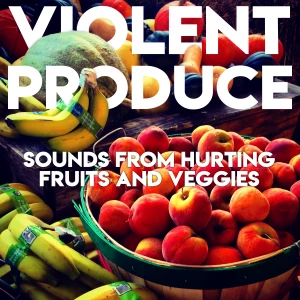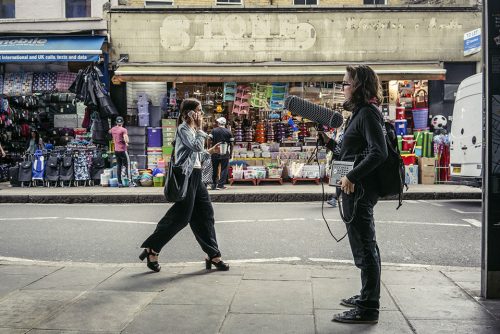Creating Unique Soundscapes with Field Recordings and Foley
Creating soundscapes is an often overlooked element of music production. The magic in your music not only lies in the melodies and harmonies but also in the intricate details that help immerse the listener in a different world. Soundscapes and textures represent one such detail. If used thoughtfully, they have the remarkable ability to elevate your music and enrich your productions. This post delves into the fascinating art of crafting unique soundscapes with the help of field recordings and foley. So, whether you’re an aspiring musician, or a seasoned producer, this guide will equip you with the knowledge and techniques to enhance your sonic storytelling.
Field Recordings – The Real World Symphony
Field recordings offer the perfect ingredient to creating soundscapes. They are the raw, unfiltered sounds of the world around us. The significance of field recordings in sound design lies in their authenticity and unique character. Just venture out into the world with a microphone, and you can capture the unique symphony of sounds that we all experience on a daily basis. From the gentle rustling of leaves in a forest to the distant roar of urban life. The process of capturing field recordings involves selecting the right location, choosing the right equipment, and paying attention to the environmental conditions.
Luckily, it has never been easier to capture field recordings. Almost all of us have access to a small portable digital recording device A.K.A a mobile phone. Modern smartphones provide a perfectly acceptable and usable solution to recording on the move. However, if you are serious about capturing the best quality audio, specialized mobile microphones can greatly enhance the quality of your field recordings, ensuring that every sound is captured faithfully.

Foley – The Art of Sound Replication
Foley is the practice of creating and adding sound effects to a production to enhance its auditory experience. By using various objects and techniques Foley artists aim to replicate real-world sounds. Their work can be found in everything from movies to video games and, of course, music production.
When utilised in music production Foley can be used for various purposes. For example, foley sounds can be fantastic for creating interesting percussive elements or drum hits. A simple thud of a book closing could be transformed into a unique kick drum or a bag of coins being dropped may make for an interesting snare layer. Foley can also be used to create impactful FX hits that punctuate moments in your music, adding emphasis.
Here are some common Foley techniques and their applications:
- Walking and Movement: Foley artists use different surfaces and shoes to replicate the sounds of footsteps, enhancing the realism of a scene or music track.
- Everyday Objects: Ordinary items like crumpled paper, creaking doors, or jingling keys can be employed to create soundscapes and unique sounds.
- Fruit & Veg: A real favourite within Foley circles. Have a rummage around in your fridge and see what audio delights you can create from snapping, slicing and squishing some of your 5-a-day.

WARNING: contains a high degree of fruit and veg abuse for sonic purposes.
Tools and Techniques
In sound design, having the right tools and techniques at your disposal can make a significant difference. To process your field recordings and foley, you’ll need software, that will enable you to edit, manipulate, and integrate these sounds seamlessly into your projects.
You will probably first want to clean up and enhance your recordings. Once you have prepared your recordings edit your sounds as you see fit. When it comes to creating soundscapes and textures nothing is off the table. Experimentation is the name of the game! Try Re Pitching your audio or reversing it. You can Loop sections or experiment with envelopes. As for effects processing the options here are almost limitless. Reverbs, delays, phasers and filters are just some of the effects able to shape your sounds beyond recognition.
Alternatively, If you don’t want to get your shoes muddy and need a specific foley or field recording ready to go, there are extensive libraries available. We have a fantastic array of soundscapes and textures available here on Routenote Create.
Let’s Get Creative – Ideas for Creating Soundscapes and Foley for Music Production
- Nature Ambiance: Capture the tranquillity of nature by incorporating sounds like birdsong, rustling leaves, or flowing water. Nature ambience is the perfect accompaniment to ambient or Lofi music by creating a serene backdrop for your music.
- Urban Rhythms: The bustling sounds of city life, such as traffic, car horns, and distant conversations, can add a dynamic and energetic layer to your urban or hip-hop beats.
- Mystical Textures: Utilize Foley techniques to create otherworldly textures. The eerie resonance of crystal glasses or the shimmer of a wind chime can infuse an air of mystique into your compositions.
- Percussive Foley: Experiment with everyday objects to craft unique percussive elements. The rhythmic tapping of a typewriter or the clinking of cutlery can help make a distinctive rhythm section.
- Sound Effects Transitions: Foley can be employed to produce dramatic sound effects transitions. These can help enhance the impact of key moments in your music, such as drops and build-ups. Use interesting field recordings and manipulate the audio to create sweeping builds. How about layering multiple recordings of impacts to create explosive drops!
- Layered Atmospheres: Combine multiple field recordings and foley elements to create rich and layered atmospheres that envelop your music, providing depth and complexity. Clever use of the stereo field and panning will create an immersive experience.
- Emotional Resonance: Harness the power of emotionally charged field recordings. Recordings of rainfall, a crackling fire or children playing can all evoke deep emotions and enhance the mood of your compositions. Emotional resonances such as these work perfectly for lofi tracks.

Conclusion
When it comes to creating soundscapes using field recordings and foley, there should be no limits to the creative possibilities. With accessible tools and newfound techniques, your sonic storytelling has infinite potential. Hopefully, you will now be inspired to create soundscapes, fx and textures to add depth and enrich your music production.
Remember – RouteNote Create subscriptions start from as little as $2.99. You also get 10 FREE credits to spend on samples along with access to our FREE sample pack bundle when you sign-up!
